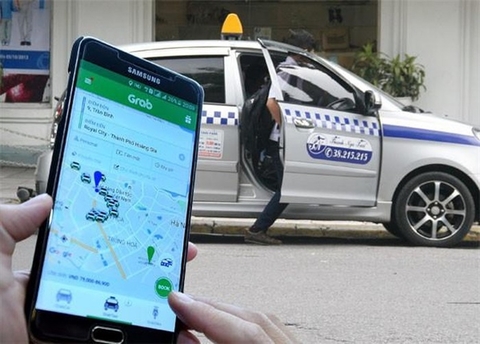
Ride hailing was becoming increasingly popular in Viet Nam due to its convenience and attractive promotions. — Photo baodautu.vn
The number of Vietnamese using ride-haling services has increased rapidly in recent years, signalling the potential for the development of the sharing economy in the country.
According to the e-Commerce White Book which the Ministry of Industry and Trade published recently, the percentage of surveyed participants booking a ride via ride-haling platforms on their mobile devices rose to 83 per cent in 2019 from 45 per cent a year ago.
Respondents said that ride-haling services were fast, convenient and safe as drivers’ information was clear while there were a lot of promotions which made the fees reasonable.
The survey also found that a majority of Vietnamese had demand for participating in sharing economy business models.
Statistics showed 69 per cent had demand for sharing or leasing their idle assets, up from 56 per cent in 2018. In addition, 55 per cent had demand for using or borrowing idle assets.
The percentage of respondents who said that did not know about sharing economy models fell from 20 per cent in 2018 to 11 per cent for those having demand for leasing and 18 per cent for those having demand for borrowing underused assets.
The book also highlighted the rapid development of e-commerce in Viet Nam.
The country’s business-to-consumer e-commerce revenue rose by 25 percent to US$10.08 billion in 2019.
The number of online shoppers grew about 1.12 per cent year-on-year to 44.8 million people last year from 39.9 million people in the previous year. Average spending for online shopping was $225 per person, $23 higher than in 2018.
Head of the ministry’s e-Commerce and Digital Economy Agency Dang Hoang Hai said 2019 saw a big change of Viet Nam’s e-commerce sector when the country was implementing the government’s master plan for e-commerce development between 2016 and 2020.
He noted that e-commerce had smoothed the way for the flow of goods and services and supported firms, especially small- and medium-sized enterprises, in seeking business opportunities in the era of international integration and the Fourth Industrial Revolution.
The book provides readers with an overall picture of Viet Nam’s e-commerce industry from legal environment, logistics infrastructure, payment to use of e-commerce among businesses, exporters and people.
Viet Nam has set a target that the e-commerce industry would grow by 25 per cent per year to $35 billion with more than half of the population shopping online by the end of 2025.
According to the e-Commerce White Book 2019, e-commerce revenue jumped 30 per cent from $6.2 billion in 2017 to $8.06 billion in 2018.
The size of the local e-commerce market was expected to reach $13 billion this year.
The e-Conomy SEA 2019 report by Google and Temasek predicted that e-commerce in Viet nam would expand 43 per cent per year in the 2015-25 period, making it the fastest growing e-commerce market in the region.
Viet Nam is now the second fastest growing e-commerce market in Southeast Asia, after Indonesia. — VNS